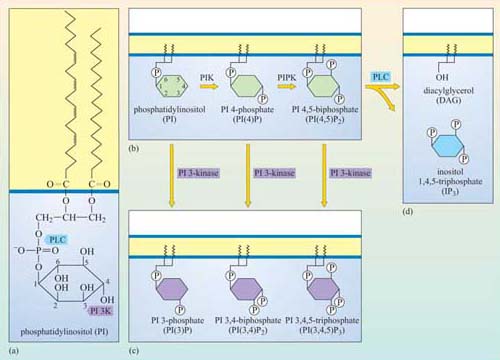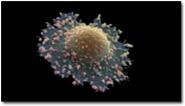3.3 Lipid-modifying enzymes
The internal surface of the plasma membrane provides a useful environment for spreading signals received by surface receptors around the cell. Several specialist enzymes are activated by membrane-bound receptors, creating large numbers of small lipid-soluble second messenger molecules, which can diffuse easily through the membrane. These enzymes all use phosphatidylinositol (PI) and its derivatives as their substrates. PI itself is a derivative of glycerol: the OH group on carbon atom 1 has been replaced with an inositol ring linked via a phosphate group, and the OH groups on carbon atoms 2 and 3 have been replaced by two fatty acyl chains, one saturated and one unsaturated (Figure 30a).

The fatty acyl chains are embedded in the cytosolic leaflet of the plasma membrane, leaving the inositol ring projecting into the cytosol. Carbon atoms 3, 4 and 5 of the inositol ring can be phosphorylated by lipid kinases (Figure 30). The best-studied enzymes employing these substrates are the phospholipase C family, which cleave the fatty acyl chains from the inositol ring, and phosphatidylinositol 3-kinase (PI 3-kinase), which phosphorylates carbon atom 3 of the inositol ring. These products then serve as second messengers. We shall now briefly explain the action of these enzymes, and then go on to describe the roles of the second messengers they generate.
